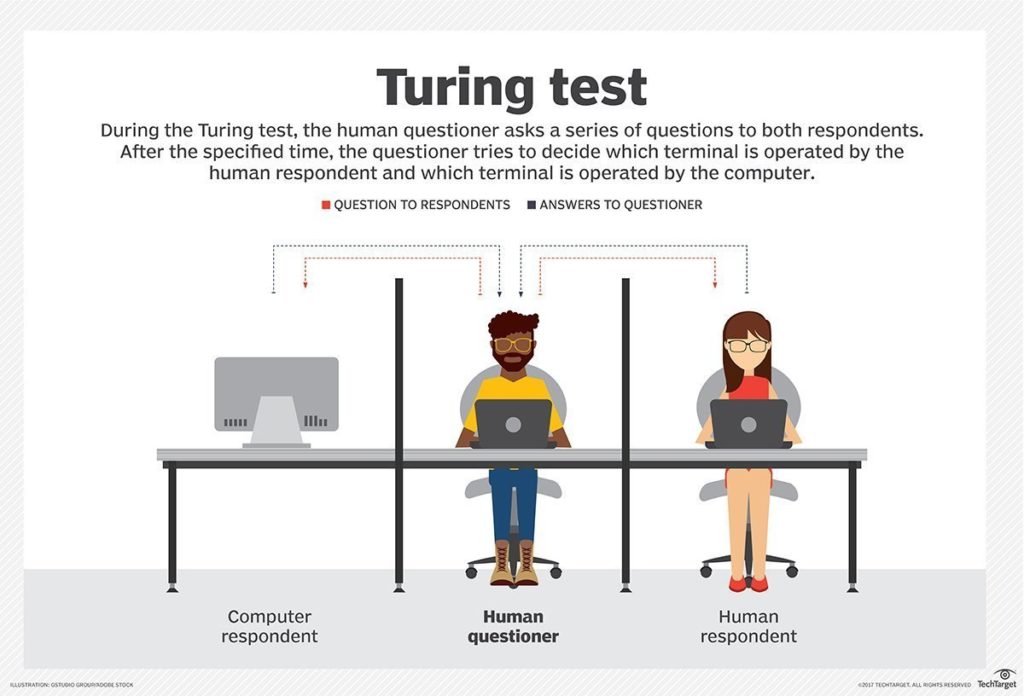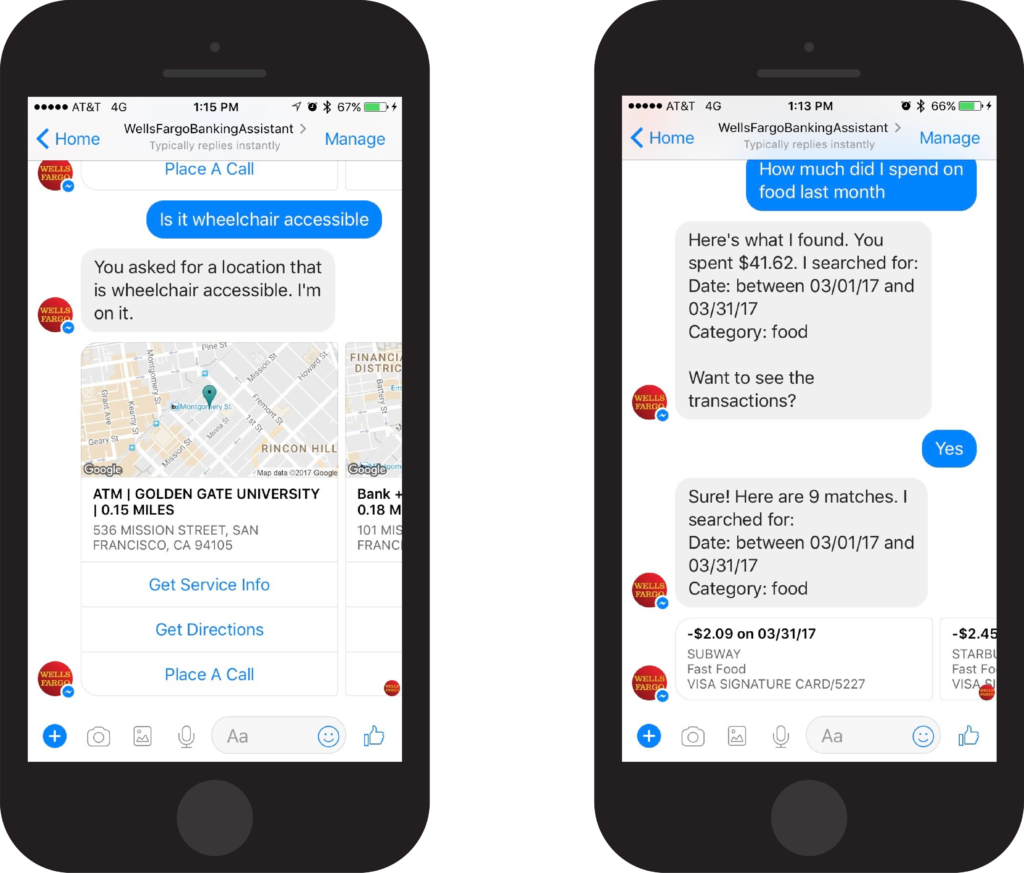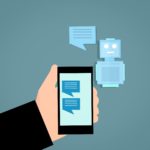You may have heard the term “artificial intelligence” thrown around the office, but what exactly is it? Artificial intelligence, commonly referred to as AI, is defined as “machines that respond to stimulation consistent with traditional responses from humans, given the human capacity for contemplation, judgment, and intention,” according to the Brookings Institution. In simpler terms, AI is defined as computer systems that can think and learn the same way that humans can. And no, the AI we’re talking about is not like the movie I, Robot… at least let’s hope not.
Even if you haven’t heard of AI before, you’ve most likely used or been subject to it. Ever searched for something on Google? I mean, who hasn’t, right? AI works to give you the best and most relevant results based on the words you type in the search bar, as Neil Nie explains in his TEDx talk. We’ll spare you the details about algorithms and neural networks, but one of the most important concepts to remember about AI is machine learning, AI’s backbone. Machine learning is just what it sounds like and is the ultimate goal of successful AI — machines learn something, process that information, and make decisions based on that knowledge. As time goes on, these machines will learn from their past “experiences” to make informed decisions, just like humans do.
Where it all began
Alan Turing, a computer science pioneer, first came up with the idea of AI in the 1950s by asking the question, “Can machines think?” A few years later, John McCarthy was credited with officially coming up with the term “artificial intelligence.” In Turing’s paper Computing Machinery and Intelligence, he discusses something called the “Imitation Game,” which is now known as the “Turing Test.” (Anyone seen the movie? If you haven’t, you should check out the trailer.) Turing created this “game” to test the ability of computers to think like humans. There are various versions of the test, but generally, it involves one person who is isolated — the interrogator — along with another person and a computer. The interrogator’s job is to simply, or not so simply, determine the human from the computer by asking a set of questions.

Although this test isn’t a fool-proof way to measure machine intelligence, Alan Turing definitely pointed us in the right direction. And I’m sure he’d be amazed at all of the advancements in technology and AI if he were here today.
Who is using AI?
Today, AI is making its way into a variety of industries. In finance, for example, chatbots are responding to customer inquiries that previously required assistance from a live representative. Below, you’ll see a Wells Fargo bot telling a customer where to find bank locations or breaking down recent account activity.

AI is also making leaps and bounds in the transportation industry. Tesla, anyone? And regarding education, a professor at Georgia Tech, along with some of his colleagues, created Jill Watson, an AI-enabled teaching assistant that answers students’ frequently asked questions in an online forum. (Check out this TEDx talk about the creation of Jill Watson.)
As for us marketers, AI is really making a difference when it comes to user experience and customer targeting. Companies are able to send push notifications to customer or potential customer phones and computers, and even more, they can personalize those notifications based on an individual’s browsing history. AI-powered product recommendations better help match online shoppers to items they are more likely to purchase. Have you ever gone to a website, let’s say nike.com, to look for a pair of shoes, then logged onto your Facebook page to find a bunch of Nike shoe ads? That’s AI in action.
How AI is streamlining healthcare communications
And finally, let’s talk about health care. AI and other technological advancements are allowing healthcare providers to streamline their marketing and communication efforts with patients and potential clients. Online portals where you can message your doctor along with text messages from your dermatologist are just a few ways medical providers are improving their communication efforts. Below, we’ll talk about a few advancements in telehealth that are changing the outdated communication protocols of the healthcare industry.
Telehealth
Telehealth involves the use of technology and online systems to access health care services remotely. Telehealth is a broad term for a few of the AI-powered communication methods described in further detail below.
The Mayo Clinic gives a number of examples of how you can use telehealth for important health information, one being remote monitoring powered by AI. The Mayo Clinic lists a variety of advancements in home health monitoring that can truly benefit patients, like devices for older adults that can detect changes in normal activity, such as when they take a fall.
Automated Text Messages
Have you ever received a text message from your dentist’s office reminding you of your upcoming appointment? Automated text messages are an example of AI in action. Although the use of text messages in the healthcare industry is not yet widespread, there are a lot of organizations currently using the technology. Many larger healthcare organizations use text messages to do things like confirm patient appointment times and refill prescriptions.
Cedars-Sinai, one of the largest nonprofit academic medical centers in the U.S., has been using automated texting for the past few years now. Mary Clare Lingel, VP of Strategic Integration at Cedars-Sinai, believes communicating over text is much more convenient for patients. “The new technologies and new innovations have allowed the patient to put the dialogue squarely in their court,” Lingel says. AI-powered text messaging systems are making it easier for patients to communicate with their doctor’s office.
Online Patient Portals
Many large healthcare systems have online patient portals where they are able to send messages to their doctors, book appointments, review test results, refill prescriptions, make payments, and more. Online portals have made it significantly easier for patients to access important health data information and for doctors to communicate with their patients. Another benefit of online patient portals is patient loyalty. According to David Clain of athenaResearch, “Portals can streamline the patient experience and increase consumer loyalty.” And if patients are loyal to their healthcare provider, the opportunity for more positive reviews and referrals increases. And what healthcare practice doesn’t love free, word-of-mouth marketing?
Healthcare Chatbots
The amount of healthcare-related apps and online chatbots powered by AI is practically endless. Here are some examples:
- Forksy is a conversational food diary that allows you to track your food, count calories, and ask nutrition-related questions. Forksy makes food tracking extremely easy — all you have to do is message Forksy what you’ve eaten and she does the rest. Even more, Forksy is available on platforms that you probably already use, like Facebook, Viber, and Kik.
- WebMD is an app and website that allows you to look up medical conditions, common symptoms, drug and treatment options, identify pills, and local health listings.
- Ada is an AI-powered healthcare platform with the goal of bringing personalized health care to all. Patients who use Ada are able to make informed decisions about their health based on the virtual doctor’s database of knowledge.
- SkinVision is an app that helps you maintain skin health. All you have to do is take a photo of a skin spot and the app will assess your photo with the power of machine learning for signs of skin cancer. Your image is then categorized as low, medium, or high risk.
The future of AI in healthcare
It seems like artificial intelligence will be extremely beneficial to the healthcare industry in regards to efficiency and convenience, but there are some concerns:
- How accurate can AI-powered apps and virtual doctors really be? Human error is a thing, but so is computer error. Where do we draw the line?
- What if patients and physicians start relying too heavily on AI? It could be a problem if physicians ignore alternative treatment options that could potentially be more helpful to patients. Situations like this could lead to cases of malpractice.
- What if patients are using healthcare apps, but ignoring the treatment options? Is it better to have face to face contact with healthcare providers?
- The “black-box” issue. If people don’t understand how AI really works, especially in an industry like health care that has a direct impact on their physical well-being, they may turn away from certain healthcare providers, as Jason Bloomberg writes in Forbes.
Why does this matter?
As our world continues to become more and more technology-driven, AI is here to stay. And we’re finding it to be helpful in a variety of ways. AI-powered apps, text  messaging programs, and online portals are changing the landscape of the healthcare industry and also changing the way patients interact with their providers. Ease of use, deformalized communication with nurses and doctors, and easy access to health-related information opens doors for more people to get the most out of their healthcare experience. And when physicians are using AI in addition to (not in place of) their breadth of medical knowledge, it may allow them more opportunities to spend time solving big medical issues that computers can’t yet solve. The potential for AI to revolutionize the healthcare industry is there, and we’re excited to see what happens next.
messaging programs, and online portals are changing the landscape of the healthcare industry and also changing the way patients interact with their providers. Ease of use, deformalized communication with nurses and doctors, and easy access to health-related information opens doors for more people to get the most out of their healthcare experience. And when physicians are using AI in addition to (not in place of) their breadth of medical knowledge, it may allow them more opportunities to spend time solving big medical issues that computers can’t yet solve. The potential for AI to revolutionize the healthcare industry is there, and we’re excited to see what happens next.
